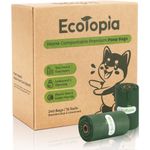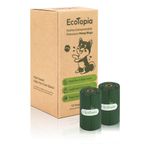Innovations in Biodegradable Materials: Paving the Way for a Sustainable Future Introduction
-
The Plastic Predicament: Discuss the pervasive issue of plastic pollution, highlighting its environmental and health impacts.
-
The Promise of Biodegradable Materials: Introduce biodegradable materials as a potential solution to mitigate plastic waste.
Understanding Biodegradable Materials
-
Definition and Characteristics: Explain what biodegradable materials are and how they differ from traditional plastics.
-
Types of Biodegradable Materials:
- Bioplastics: Derived from renewable sources like plants.
- Compostable Plastics: Designed to break down in composting environments.
- Oxo-degradable Plastics: Contain additives to promote degradation.
Environmental Impact of Biodegradable Materials
-
Benefits:
- Reduced Landfill Waste: Biodegradable materials decompose, reducing landfill burden.
- Lower Greenhouse Gas Emissions: Properly managed biodegradable materials emit fewer greenhouse gases compared to traditional plastics.
-
Challenges:
- Incomplete Degradation: Some biodegradable materials may not fully degrade, leading to microplastic pollution.
- Composting Infrastructure: The lack of industrial composting facilities limits the effectiveness of compostable plastics.
- Misleading Labeling: Not all products labeled as biodegradable meet environmental standards, causing consumer confusion.
Innovations in Biodegradable Materials
-
Mycelium-Based Packaging: Explore how fungi-derived materials are being used to create sustainable packaging solutions.
-
Seaweed-Derived Plastics: Discuss the development of plastics from seaweed, offering a renewable and biodegradable alternative.
-
Algae-Based Products: Highlight innovations in using algae to produce biodegradable materials for various applications.
Biodegradable Materials in Various Industries
-
Fashion: Examine the use of biodegradable materials in clothing and accessories, reducing the fashion industry's environmental footprint.
-
Packaging: Discuss the shift towards biodegradable packaging in food and consumer goods industries.
-
Construction: Explore the potential of biodegradable materials in building and construction, such as bio-based insulation and composites.
Consumer Choices and Their Impact
-
Identifying Truly Biodegradable Products: Provide guidance on how consumers can discern genuine biodegradable products from misleading ones.
-
Supporting Sustainable Brands: Encourage consumers to choose products from companies committed to environmental sustainability.
-
Reducing Single-Use Plastics: Offer practical tips for minimizing the use of single-use plastics in daily life.
Policy and Regulatory Considerations
-
Standardization of Biodegradable Labels: Advocate for clear and standardized labeling to help consumers make informed choices.
-
Government Incentives: Discuss the role of government policies in promoting the development and adoption of biodegradable materials.
-
Global Initiatives: Highlight international efforts and agreements aimed at reducing plastic pollution and encouraging sustainable materials.
Conclusion
-
The Path Forward: Summarize the importance of continued innovation, consumer education, and supportive policies in advancing biodegradable materials.
-
Call to Action: Encourage readers to actively participate in the transition towards a more sustainable future by making informed choices and advocating for environmental policies.





